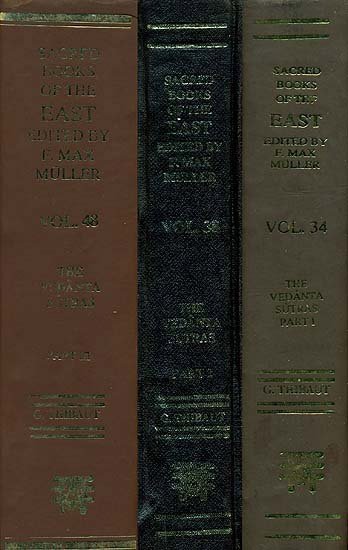Brahma Sutras (Ramanuja)
by George Thibaut | 1904 | 275,953 words | ISBN-10: 8120801350 | ISBN-13: 9788120801356
The English translation of the Brahma Sutras (also, Vedanta Sutras) with commentary by Ramanuja (known as the Sri Bhasya). The Brahmasutra expounds the essential philosophy of the Upanishads which, primarily revolving around the knowledge of Brahman and Atman, represents the foundation of Vedanta. Ramanjua’s interpretation of these sutras from a V...
Sutra 1.2.5
5. On account of the difference of words.
The clause 'That is the Self of me, within the heart' designates the embodied soul by means of a genitive form, while the object of meditation is exhibited in the nominative case. Similarly, a text of the Vājasaneyins, which treats of the same topic, applies different terms to the embodied and the highest Self, 'Like a rice grain, or a barley grain, or a canary seed, or the kernel of a canary seed, thus that golden Person is within the Self' (Śat. Br. X, 6, 3, 2). Here the locative form, 'within the Self,' denotes the embodied Self, and the nominative, 'that golden Person,' the object to be meditated on.—All this proves the highest Self to be the object of meditation.
